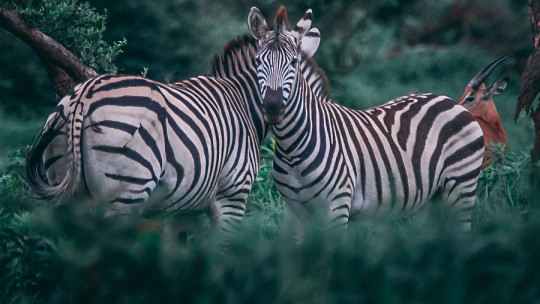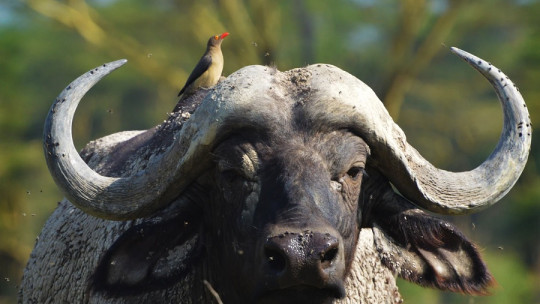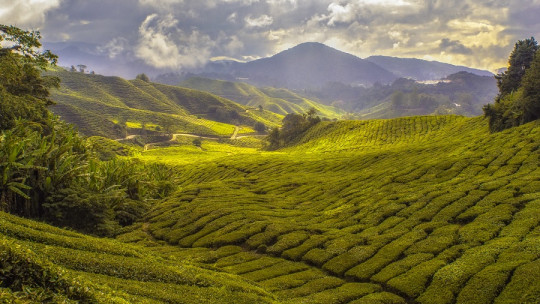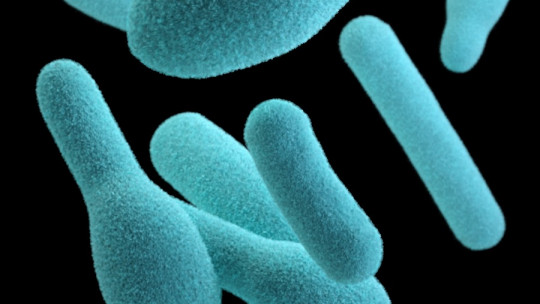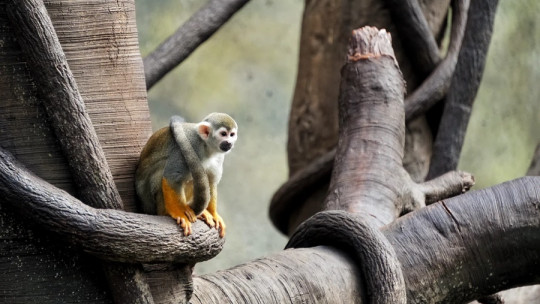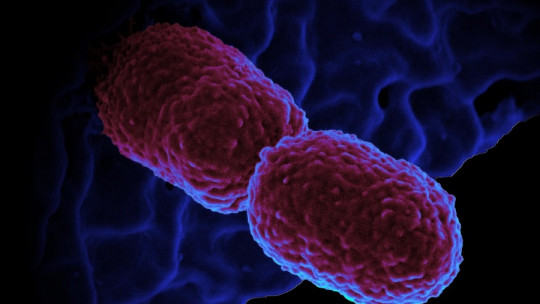
An ecosystem is a biological system made up of living and non-living elements that are interrelated in a series of complex chains and interactions. Thus, a specific ecosystem encompasses the biodiversity that inhabits and is related to a physical space, with characteristic chemical and environmental properties. In the world, there are a total of 8 different types of ecosystems.
Despite this general definition, Conceiving an ecosystem as a closed and delimited space is a mistake Each ecosystem is made up of practically infinite microecosystems, with specialized characteristics and environments. Without going any further, the bark of a tree could be considered a microecosystem, since the conditions of light, humidity and availability of resources in this small space have nothing to do with the surface of the trunk or branches, for example.
Something as simple as the footprint of a large mammal can form a microecosystem for bacteria and small arthropods. Thus, the word “ecosystem” serves to broadly compartmentalize the variety of environments in the world, but not the real biological needs of the different species of living beings. To delve deeper into this term and its implications, today We tell you everything about the biocenosis, or what is the same, the living part of the ecosystem
What is biocenosis?
The biocenosis (or biological community) is known as the set of living beings that coexist, develop and interact in the same place In other words, this term encompasses all biological populations that coexist in space and time. This slightly abstract concept is essential when it comes to understanding the general functioning of the ecosystem, as you must take into account the following:
Biotope (geographical space) + biocenosis (living beings) = ecosystem
Thus, the biotope refers to a physical space with specific physicochemical characteristics (temperature, light, humidity, pH and others) and the biocenosis refers to the living beings that live here.
Generally, when talking about a biological community, the first thing that comes to mind is large mammals and birds, striking for their size and ease of observation. Nothing could be further from the truth, then we can distinguish the biocenosis into 3 large categories:
Below, we present a series of interesting data from a zoological point of view about the different strata that make up the biocenosis. Go for it.
1. Zoocenosis
It may sound familiar to you that at this level there is a concrete and easily explorable relationship: the trophic pyramid. Living beings base their existence on 3 events: survive, eat and reproduce
To carry out the second task, the animals “organize” (the quotation marks are necessary, since it is not a conscious behavior) when it comes to eating and preying, with the result that the biocenosis (and therefore the ecosystem ) remains stable over time, at least ideally.
The trophic pyramid is conceived as a series of links, where the base is represented by plants (producers) and the following spaces by herbivores, carnivores and superpredators (the “peak”), which feed on other hunting animals. This compartmentalization is quite basic and general, since many important feeding strategies are left undescribed, such as detritivorous living beings, parasites, hematophages, necrophages and many more.
So that, Animals continually interact with each other to eat, avoid being eaten, compete for resources, and, exceptionally, help each other The ecological niche represents this continuous “tug of war” between animals, because when two species overlap in terms of habits, exploitation of resources and spatial occupation, one of the two is doomed to extinction or expulsion from said niche. .
2. Phytocoenosis
If we talk about phytocenoses, we cannot leave the term biomass out of the question. Biomass is defined as the weight of living material found in a given area and time This parameter can be expressed in normal or dry weight, generally with g/m2 and kg/m2 measurements. Although the strict concept must cover animals and microorganisms, one of the most important indicators of the productivity of an ecosystem is the biomass represented by the phytocoenosis, that is, plant living beings.
To understand biomass, we must generally know net primary production, the rate at which new biomass is generated in an ecosystem, generally in the form of photosynthesis. For example, a swamp has a productive capacity of 2,500 gC/m2/year, while the value in a desert is negligible, 3 gC/m2/year.
This is broadly related to the concept of food chain previously described, since It is estimated that from one level to another there is a loss of 90% of the energy contributed by the biomass consumed Thus, from a primary producer (plant) to a top predator, which is 4 levels “above”, a total change of 1,000 g/m2 to 1 g/m2 of transferable biomass can occur.
3. Microbiocenosis
We do not forget about the microbiocenosis, those living beings that cannot be perceived at first glance, but that do not stop being of great importance for ecosystems Without going any further, there are approximately 50 million bacterial cells in one gram of soil and one million bacterial cells in one milliliter of fresh water. With these data, it can be calculated that 15% of the planet’s total biomass corresponds to microscopic beings, or in other words, about 70 gigatons by weight.
We can say little more about microbiocenosis without entering into complex terms, beyond the fact that we also present it, as strange as it may sound. The microbiome that settles in our mucous membranes and intestines, for example, is a type of microbiocenosis composed of generally symbiotic and commensal bacteria.
The biocenosis is not watertight
The fact that a set of biological communities exist in the same space and time in a community does not mean that they will do so in the future. The biotope changes and, therefore, Living beings must get used to new challenges resulting from environmental variations (physical or chemical).
Communities can undergo variations over time, something known as succession. These usually happen at very slow scales, and thanks to them changes occur in the populations, that is, modifications in the biocenosis of the ecosystem itself.
In addition to all this, there are external factors that limit the biological distribution of a species, that is, it is part of a biocenosis and not of all of the planet at the same time. This concept It is very interrelated with the ecological niche, which we have briefly touched on in previous lines Some of these barriers are the following:
These barriers between communities or biocenosis create complex but extremely interesting places from a biological point of view: ecotones. This is a transition zone, where all biological components are in tension. Here the highest rates of energy exchange occur and, therefore, they tend to be the places with the greatest wealth of biodiversity
Summary
As you may have seen, every zoological term entails a series of previously established, widely interconnected concepts. We cannot understand a biocenosis, for example, without taking into account the ecological niche of the species, the trophic pyramids, the barriers, the biomass and the productive capacity of an ecosystem, for example.
After all, All these terms determine the variety of populations of living beings that settle on a physical space The biotope and the biocenosis create an ecosystem, but do not forget that neither of these two terms is immutable and infinite: ecosystems continually change on a small or large scale, which is why the biocenosis can experience many variations throughout its evolutionary path. .
- Biomass, mendoza.org. Collected on January 31 at https://www.mendoza.conicet.gov.ar/portal/enciclopedia/terminos/Biomasa.htm#:~:text=La%20cadena%20de%20biomasa%20representa,energ%C3%ADa %20estimated%20in%20a%2090%25.
- Biological community, aitanatp.com. Collected on January 31 at http://www.aitanatp.com/nivel6/ecosist/comunidad.htm
- Gosset, A., Ferro, Y., & Durrieu, C. (2016). Methods for evaluating the pollution impact of urban wet weather discharges on biocenosis: a review. Water research, 89, 330-354.
- The biosphere, UM.es. Collected on January 31 at https://www.um.es/sabio/docs-cmsweb/materias-may25-45/tema_5.pdf
- Topic 2: Ecology, environmental factors and relationships in ecosystems, apuntesmareaverde.org.


